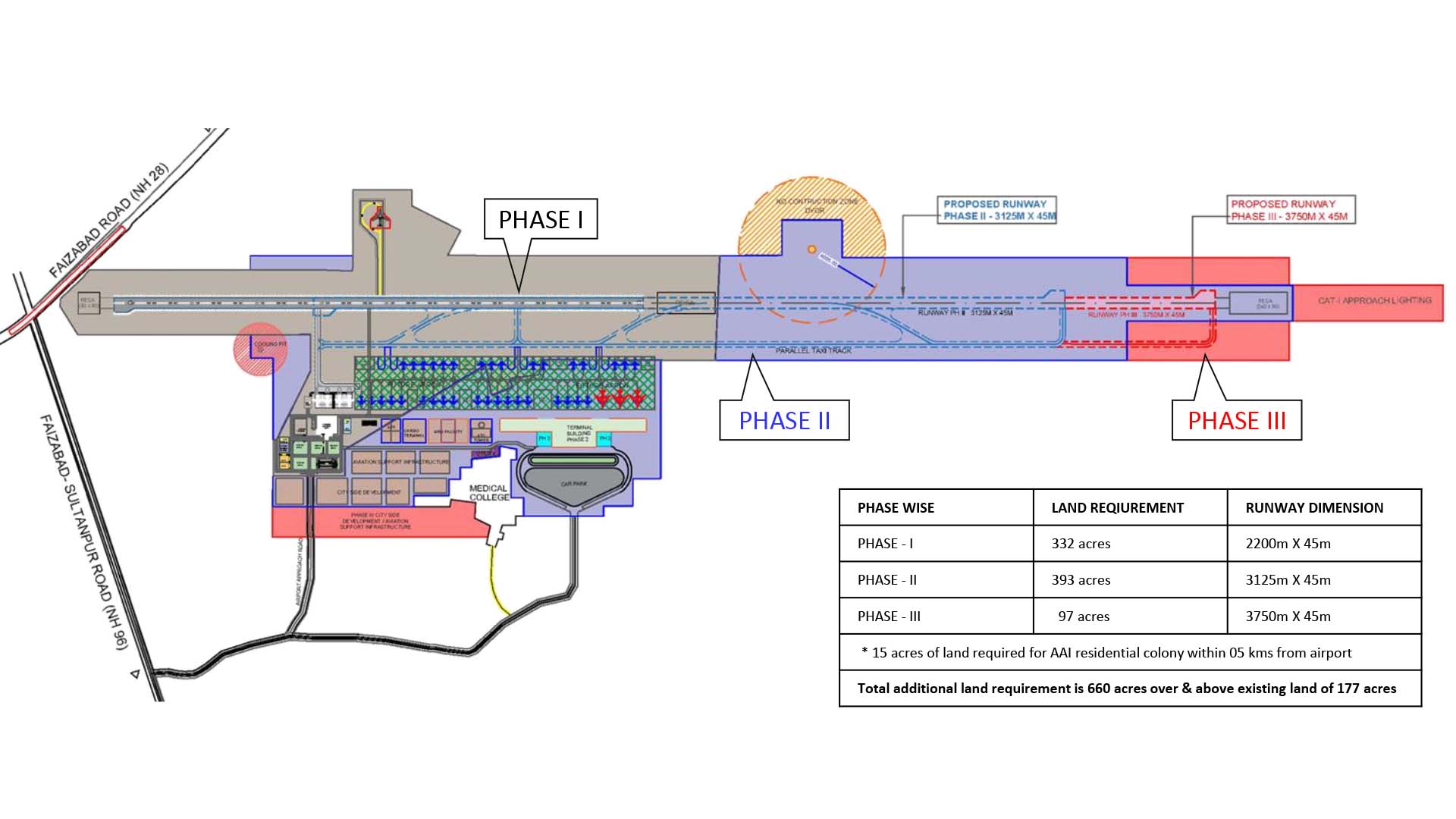AYODHYA: On the bustling street, in the middle of din over the construction of the grand Ram Temple, travel operator Praveen Pandey can’t contain his joy. His is double. To handle a clutch of frenzied pilgrims who have been visiting Ayodhya following the landmark Supreme Court judgment in November 2019 and the excitement over the upcoming airport — reminiscent of Lord Ram’s own Pushpak Vimaan that once flew over this place thousand years ago.
The Ayodhya airport, an ambitious project of chief minister Yogi Adityanath, is being seen as much needed infrastructure boost for tourism industry and connectivity in the region, months after a 341-km long Purvanchal Expressway in the neighbourhood created buzz of development in Awadh and eastern parts of Uttar Pradesh.
“After the court verdict, Ayodhya has witnessed a jump of around five times in the tourist footfall, which will increase several times in the coming years,” Pandey, who runs a firm, Ayodhya Yatra, in the city, tells The New Indian.
A lot of planning has gone into the development of this airport, while keeping in the sentiments of the locals and the faithful. It will be called Maryada Purushottam Shri Ram International Airport, the Yogi government has said. In the first leg, the airport will see use of existing infrastructure.
According to government officials, the airport will be developed in three phases, spread over an area of 821 acres, with an expenditure outlay of Rs 1008 crore.
The government has asked the Airport Authority of India (AAI) to complete the first phase before the idol of Ram Lalla is placed in the sanctum sanctorum of the under-construction Ram Temple which is expected by the next year.
“Out of the total 821 acre of land required, the state government has so far acquired 497.853 acres and signed a lease agreement with the AAI for the transfer of 318 acres of land for the first phase,” said UP additional chief secretary (information and public relations) Navneet Sehgal, a 1989-batch IAS officer.
Once operationalised, the first phase of the airport will be able to handle 300 passengers every hour and 10 lakh passengers per year. There will be eight check-in counters, six frisking booths including four for males and two for females besides four parking bays with capacity for 100 cars and 10 coaches.
“When tourists from other parts of the country visit Ayodhya, they make it a point to visit religious sites in Gorakhpur, Prayagraj, Varanasi and sometimes, even Buddhist places in Shravasti and Kushinagar. When this airport starts operations, most of the tourists visiting the temple town will also visit these places since they would need a small fraction of time to reach here than they currently do. Isn’t that amazing considering we already have a functional Purvanchal Expressway,” asked Pandey.
People from all walks of life in the region that includes Ayodhya, Gonda, Basti, Bahraich, Sant Kabir Nagar, Siddharthanagar, Balrampur, Shravasti, Gorakhpur, Prayagraj, and Lucknow feel that the airport will change the face of regional connectivity, boost tourism by manifold, and thereby improving the livelihood of common man.
“This airport would be a bigger boon for neighbouring districts which have got eclipsed due to focus on Ayodhya alone, be it a train or bus service. So far, the direct train services have always connected Ayodhya to metropolitan cities outside UP. So it’s a time consuming affair to first land in Ayodha and then travel to neighbouring districts. This would save travel time for those youth settled outside UP,” says Vishwa Deepak Tripathi, a resident of Gonda and a lecturer of defence studies.
The airport will also provide a traffic-free route as it will use the navigation between Ayodhya and Hindon, the site of second international airport, considering IGI-T3 is already reeling under heavy rush 24×7.
At present, Ayodhya is connected with state capital Lucknow and Delhi through train and road routes. Currently, it needs at least 12 hour by train and about 15 hours by road for a person to reach Ayodhya from national capital Delhi.
The Ayodhya airport will not only help improve the means to earn by travel agents, guides but also give a fillip to hotels, restaurants and other ancillary business units that may come to support the aviation business including cold-storage units, freight and cargo business houses and even hail-a-cab operators.
“Our youth would no longer require going to other cities like Delhi and Mumbai for jobs,” said Shivam Pandey, a student leader in Gonda.
Traders and entrepreneurs in the region, too, feel that the airport would help them transport goods easily and conveniently to and from other parts of the country.
“At present, the best way to transport goods from Delhi, from where I mostly purchase items in bulk, to different parts of Uttar Pradesh, is by trucks. But it typically takes 2-3 days. When this airport is functional, I hope this problem will not exist,” said Rampal, an entrepreneur.
Religious outfits are obviously overjoyed.
Vishva Hindu Parishad (VHP) International Working President Alok Kumar said that Ayodhya will emerge as the hub of religious pilgrimage for Hindus living around the world once the airport is functional.
“Ayodhya will now receive the kind of tourist volume Mecca and Jerusalem get,” he added.













